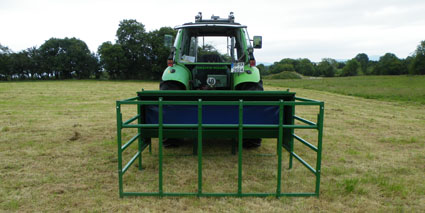
Howev-er, creep feeding grain might be an economical option for many this year due to lower grain prices and dry condi-tions throughout the state. Annual ryegrass is best grazed from March until May.Ĭreep grazing calves is an effective way to help in-crease weaning weights and is generally less expensive than creep feeding. Small grains such as oats, wheat, rye and triticale can be used during October and Novem-ber and again in early spring for winter hardy varieties. Forages, such as alfalfa and red clover, can be used in creep grazing from April until September 15th and then from Novem-ber on into winter. Millet, sudan-grass, and sorghum-sudangrass hybrids grow rapidly and produce high quality forage in a short amount of time and are best grazed from July to September. Summer annuals can be established in tillable areas. The type of forage or forage combinations that are best suit-ed for creep grazing will vary depending on the season and weather conditions. This method works well in a rotational grazing system where the calves can advance to an adjacent paddock under the fence where forages are higher quality before rotating the cows to that paddock. The calves will return to the high quality forage after cows have been removed due to their growing independence and natural curiosity.Īnother method often used is to position an electric fence high enough (36 to 42 inches) for calves to pass under while still deterring cows from jumping over or going under. When starting to creep graze, it may be helpful to allow both cows and calves into the special pasture for a short peri-od of time. A special pas-ture with high quality forage can be set aside strictly for this pur-pose. These gates generally range from 15 to 18 inches in width and 36 to 42 inches in height. Calves 3 to 4 months of age are less depend-ent on the cow for milk and high quality forage provides a substantial percentage of their nutrients.Ĭreep grazing can be accom-plished by allowing access to a special pasture through an opening large enough for calves, but too small for cows to get through.

The actual stocking density will depend on the land production potential, forage type, fertility, and season. In creep grazing, nurs-ing calves either graze fields before the cows, getting first choice of the more luscious, higher quality pasture, or they have access to different pas-tures that cows cannot graze.Ĭreep grazing is generally less expensive than creep feeding grain, requiring less labor and being more convenient. Creep grazing pastures can add pounds to a calf’s weaning weight.

Two main types of creep systems are used creep grazing and creep feeding a concentrate-based supplement. Getting beef calves to gain weight as efficient as possible is every producer’s goal, and creep feeding calves can help achieve that.


 0 kommentar(er)
0 kommentar(er)
